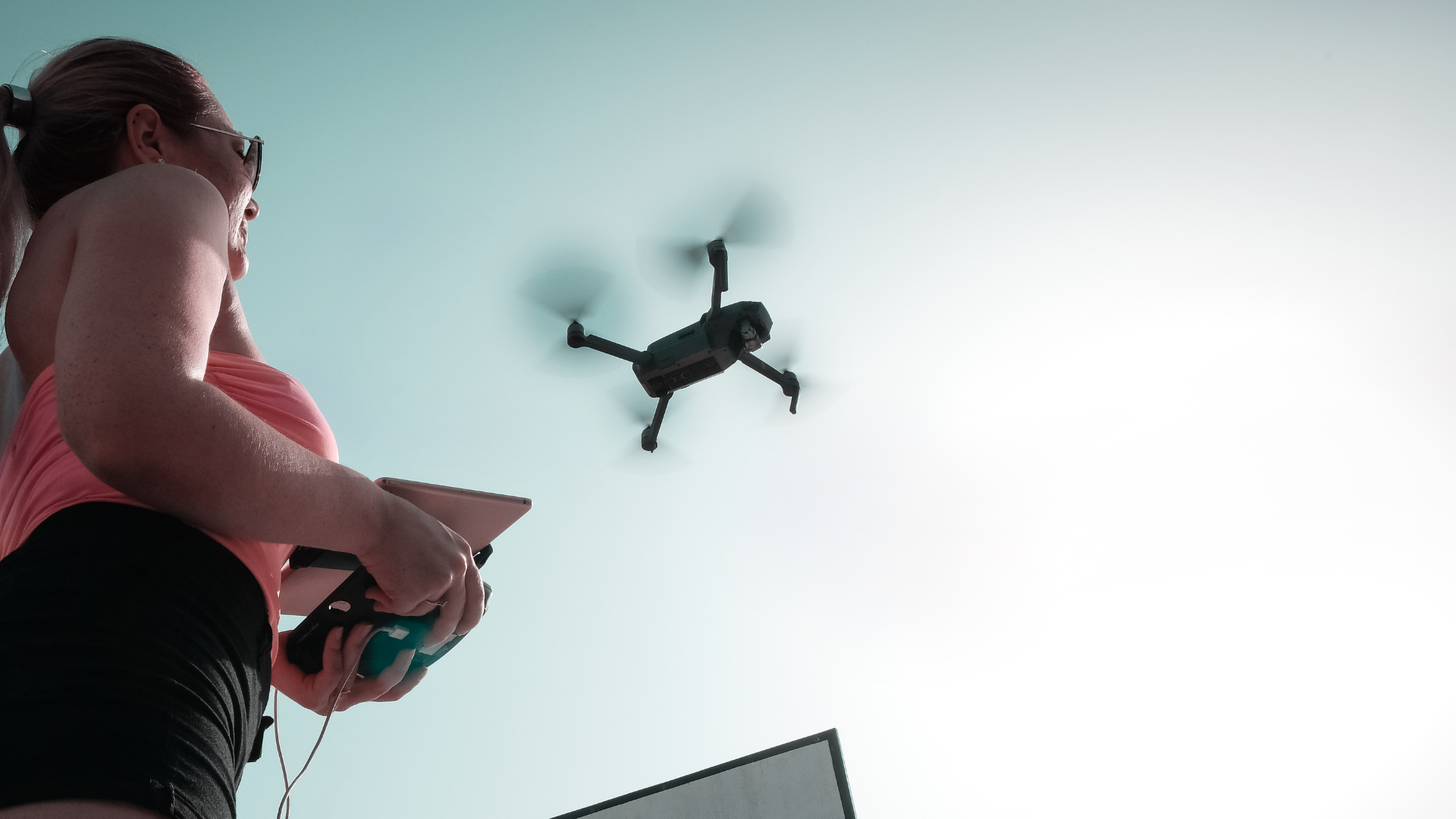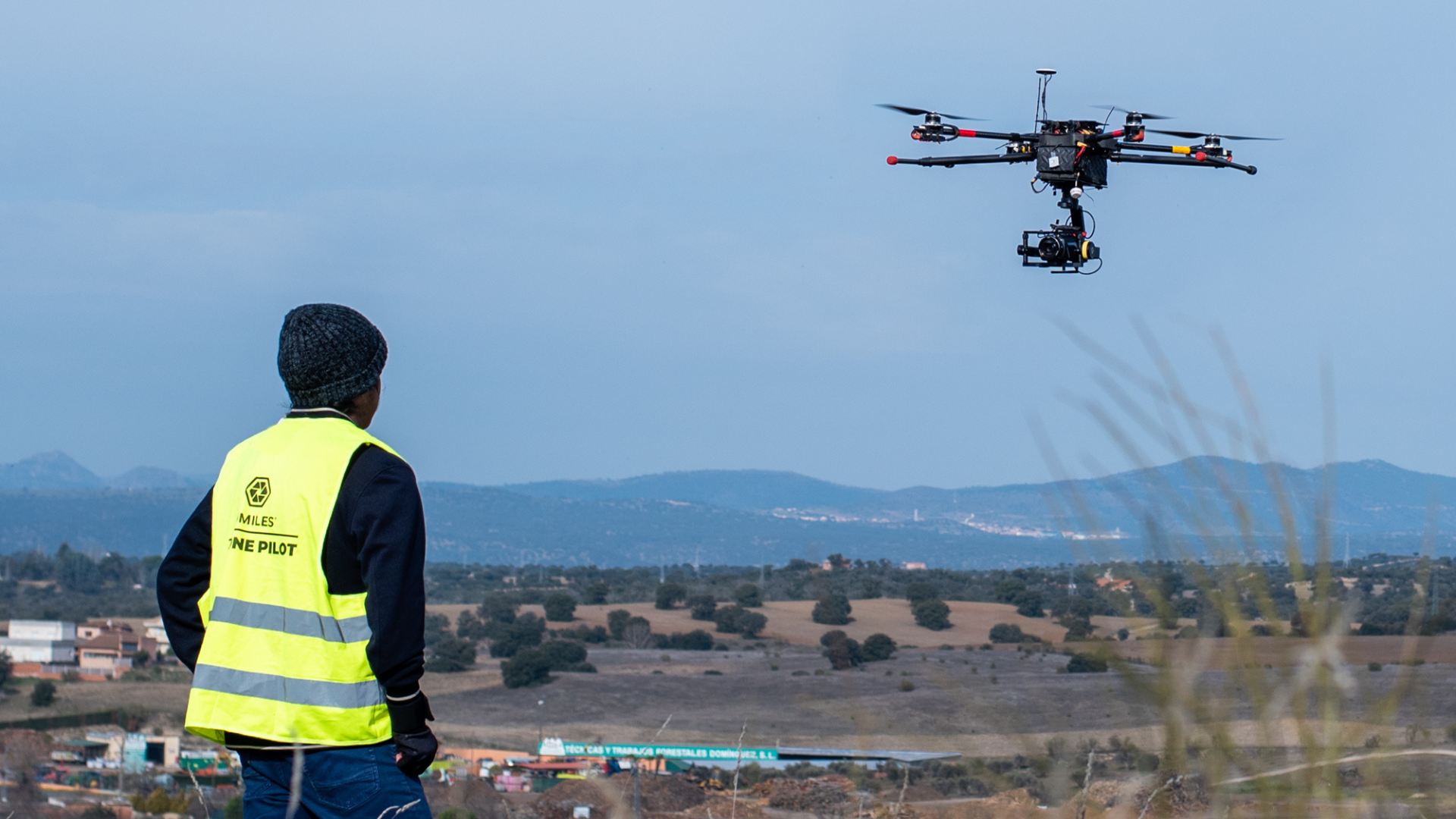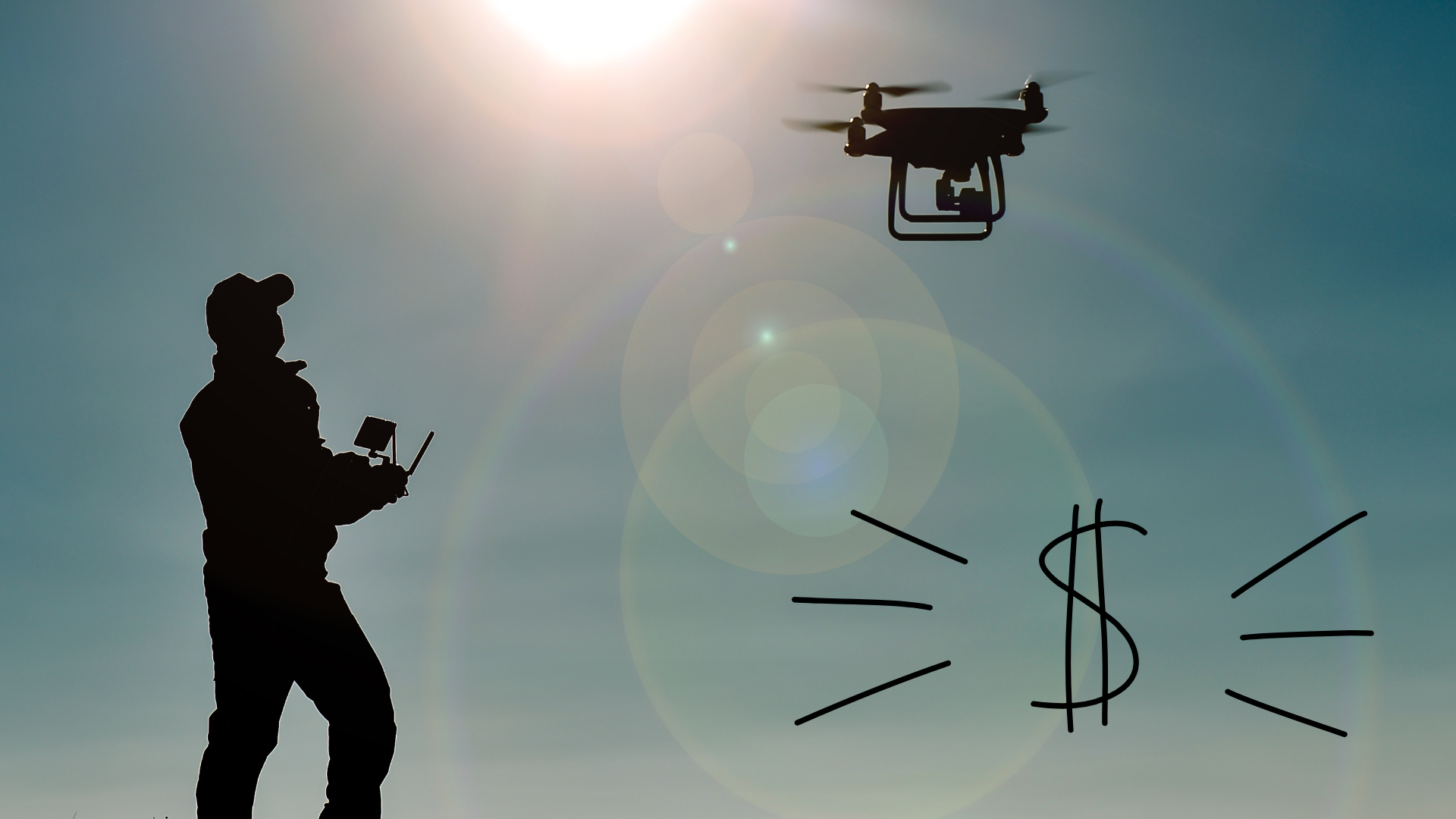If you’ve just bought a drone, or are thinking about getting one, you’re probably eager to get up and running with your new acquisition and master the air. But keep in mind that controlling this type of aerial vehicle can be a difficult task at first, so take the time to learn how to fly a drone safely and avoid accidents.
In fact, if you really want to learn how to fly a drone so that you can take advantage of the professional opportunities that exist in this sector, we recommend you take any of our drone courses.
We have the most complete offer, ranging from advanced courses with which you get all the certifications such as the professional drone pilot course, to more specific training such as the radio operator course or the drone photogrammetry course. Therefore, if you want to learn how to fly a drone properly, we are your best option.
Índice de contenidos
ToggleTips that every beginner should know before learning how to fly a drone
Flying a drone for the first time can be a difficult task, which is why safety should be your first priority when learning how to fly drones. This is because as a flying object, it is possible to cause harm to yourself or others if you do not have good control of the device.
In addition, the drone can also be affected by strong impacts or falls. Therefore, before learning how to fly a drone, you should pay attention to safety measures and follow the recommendations below.
Know the safety rules before learning how to fly a drone
You must know that European drone regulations have established certain safety rules that every drone owner must follow when learning how to fly drones. As this legislation can change from time to time, we recommend that you always read the current regulations. Some of the rules are:
- The maximum flight altitude allowed is 120 metres.
- The pilot must always maintain visual contact with the drone.
- You may not fly near airports
- Special authorisations are required to fly in controlled areas such as SPAs.
Select an inexpensive drone
If you don’t know how to operate a drone yet, it is almost impossible to avoid that your drone suffers some bumps or falls due to lack of experience, which can seriously affect the parts of the drone. That is why it is best for all beginners to choose an inexpensive and simple drone, so that if situations arise in which the drone is badly affected, you will not lose a lot of money.
Once you have mastered all the techniques and know how to fly a drone properly, then it will be the right time to buy a newer model with many more features.
Choose the right place to practice
If you don’t have any experience with drone flying, it is best to choose an open, obstacle-free place where you can start your first tests.
Keep in mind that there is a high probability that your drone will fall or that you will lose control due to lack of experience, so you should avoid accidents. In this post we talk about where to fly drones, but we recommend you always go to the official ENAIRE source.
You should never start your practice in areas where there are people or animals around, as you could hit them and cause them problems if you don’t know how to control a drone.
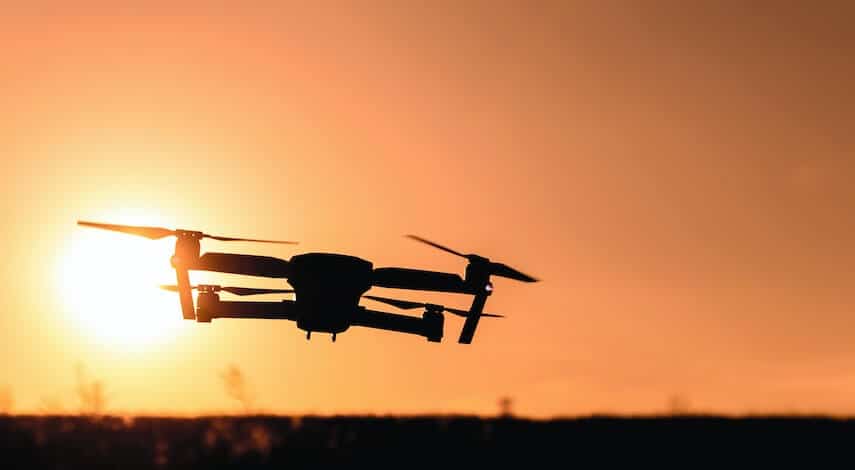
In addition, you should take into account the weather, to avoid exposing the drone to strong wind currents that interfere with its flight when you are inexperienced and just learning how to fly a drone.
Familiarise yourself with the controls
Although there are many types of drones and some have specific functions, the basic ones are controlled by a remote control consisting of two joysticks, which allow you to control the various movements of the drone.
In general, all remote controllers used to control the drone have two modes of configuration. The most commonly used is “Mode 2”, which generally (not in all models but in most), each joystick has the following functions:
- The right joystick controls horizontal movements, to the right and left, or forward and backward.
- The left joystick controls turning and vertical movements. It is also responsible for acceleration.
Right stick
When you move the right stick in any of the allowed directions, the drone will move in the same direction, as long as you are behind the drone. That is, if you move the stick to the right, the drone will move to the right and likewise to the left. If you move the joystick forward, the drone will move to the right, and if you move the joystick towards your body, the drone will move backwards.
Note that when the drone changes direction and faces you, the controls are reversed, so you should always turn in the direction the drone is moving in order to have better control of the drone.
Left stick
The left stick will accelerate the motors so that the movement of the blades helps to lift the drone.
Moving the left stick forward will accelerate the drone, while moving it backwards will decelerate it. Moving the lever to the right will turn the drone clockwise, and to the left it will turn the drone counter-clockwise. Once you have mastered these 2 levers, you will know how to fly a drone in a basic way.
Once you have mastered both levers you will know how to lift a drone in any situation, but remember that to achieve excellence you need a lot of practice.
Other button
Depending on the drone model you have selected, the controller will have additional buttons that activate certain functions. One of the most common is the auto-level function, which will help you keep the drone’s camera aligned with the horizon for better quality images.
It may also have buttons to activate the auto return function, image capture, video recording, among other functions.
In any case, it is best to read the user manual of your drone so that you can learn the functions of each of the buttons included.
Perform small tests before flying your drone
To learn how to fly a drone, you should perform minimal elevation tests to familiarise yourself with the movements and sensitivity of the controls.
It is recommended that you start with small tests where you constantly repeat various movements until you have mastered them. You can use these practice exercises:
- Raise the drone gently, no more than 30cm from the ground. This will allow you to know how much pressure to apply to the joystick so that it can separate from the ground, and let it drop slightly. This movement will be ideal for you to learn how to land a drone without hitting it hard when it falls.
- Once you have mastered the elevation, you will need to do small test movements. Try flying the drone in straight lines until it forms a square. This will help you master horizontal movements.
- Mark two points on the ground and try to move the drone from the first to the second point so that you can control the distances.
- Try to lift the drone and keep it in one place. This may seem like a simple task, but when you try it, you will see that it is not so easy.
At this stage you will have to be very patient and practice each movement several times until you have mastered the drone. Remember that it is practice that will give you enough skill to know how to fly a drone like an expert.
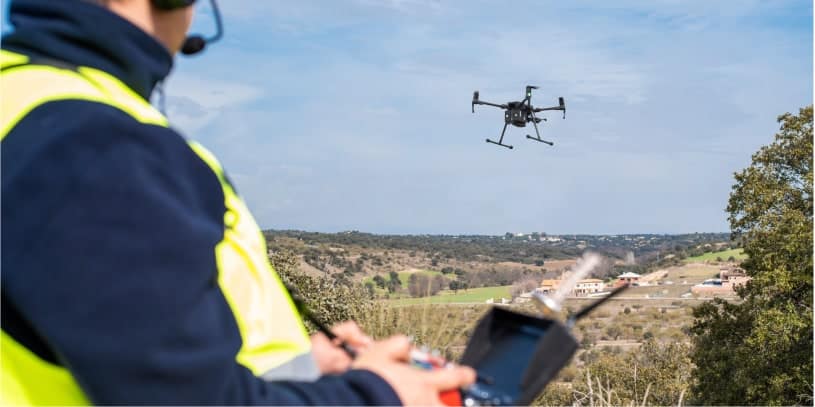
Note: Some models have a simulator that allows you to experience the control of the drone virtually, so that you can familiarise yourself with the movements before you go into the real world.
Check that you have everything you need before learning how to fly a drone
Read the manufacturer’s manual so that you can apply all the necessary settings according to the drone model you have purchased.
Usually all the pre-settings are set by the manufacturer, but in some cases it will be necessary to apply checks on the calibration of the drone, GPS or compass to ensure a correct flying experience.
Once you know how to fly mini drones, you should always do a small check before each flight to make sure you have everything you need:
- Check that the battery level is at 100%. It is always better to have the full potential of the batteries to be able to use it for longer without interruption.
- Always carry a set of replacement batteries with you in case the batteries installed in the drone run out. You should also check that the batteries are charged.
- Check that the memory card is inserted. If your drone has a camera, it is very common to fly the drone thinking you are recording the landscape, only to realise that nothing has been recorded because the card is missing.
- Before turning the drone on you should check that the throttle is at its minimum setting.
- If the drone needs to be calibrated with the satellite, you should wait until the configuration is complete before starting the flight.
- Check that the space in which you are flying the drone has sufficient free area and identify any obstacles that could interfere with communication with the controller.
- If your drone has an auto-return function, you should check that its flight altitude is higher than the obstacles that could get in the way.
How to fly a drone for the first time?
In order to learn how to use a drone for the first time, it is important that you learn to master three basic movements that are fundamental during any type of flight: take-off, hovering in the air and landing.
Here are some instructions on how to fly a drone, which will allow you to master the basics of flying a drone.
How to take off a drone?
One of the main activities to learn how to fly a drone correctly is take-off. Controlling how to take off a drone is not an easy task.
Each drone may operate differently, so we recommend that you read the drone manual carefully. However, in order for the drone to take off, it is usually only necessary to use the throttle:
- Position the drone at the take-off point, making sure there are no objects or people nearby.
- Position yourself behind the drone and back up a few steps to be at a safe distance in case the take-off goes wrong.
- Before starting the drone, check that the throttle lever is at its starting point.
- Turn the drone on and gently press the left joystick forward (throttle) and stop. This will spin the blades, but it will not yet lift off.
- Press the left joystick forward a little more until you feel the drone start to separate from the ground.
- Don’t let it rise more than 30cm off the ground, and slowly ease the throttle back. This will bring the drone back into contact with the ground and you can practise a few times until you feel confident to lift it a little higher.
How do I get my drone to hover?
Keeping the drone in the air takes a bit of practice, as you need to get it off the ground and then maintain a constant speed. Make a few small adjustments with the right stick and you should be able to get the drone to hover.
How to land a drone?
Knowing how to fly a drone is not all you need to know, another critical action that every beginner must learn is how to land the drone. This is fundamental to prevent the aerial vehicle from colliding with the ground and damaging itself. In this case the technique is quite simple:
- Once the drone is in the air, you must position it at a point where it can descend without hitting an object.
- To land it is necessary to gently roll back the throttle so that the drone slowly approaches the ground.
- When the drone is about 3-5 cm above the ground before it touches the ground, then you should bring the throttle back to 0 so that it finishes descending.
Once you have mastered landing the drone correctly, you can consider that you know the basics of how to operate a drone. Therefore, you can put your skills into practice whenever you wish, as long as you comply with the requirements and regulations of the country you are in.
Do you need a licence to fly a drone?
Now you know how to fly a drone, but did you know that European legislation requires you to have a drone licence if your drone weighs more than 250 grams?
For the use of drones weighing less than 250 grams, it is only necessary to familiarise yourself with the manufacturer’s user manual. However, in any case, the flight regulations established for the use of drones in Spanish airspace must be complied with.
Likewise, it is ideal to have civil liability insurance for drones in case the drone hits a person or other objects and it is necessary to cover damages caused to third parties. Although it is not a compulsory document.
We hope you found this guide on how to fly a drone useful. If so, share it with your friends and let other people know about this wonderful aerial world.
How difficult is it to fly a drone?
Once you know the basics of how to fly drones, it will become easier and easier to master the other movements. You just need to practice frequently so that you can perfect your technique.
If you follow all the steps for flying a drone for the first time that we have given you at UMILES, you can become a professional in no time.
